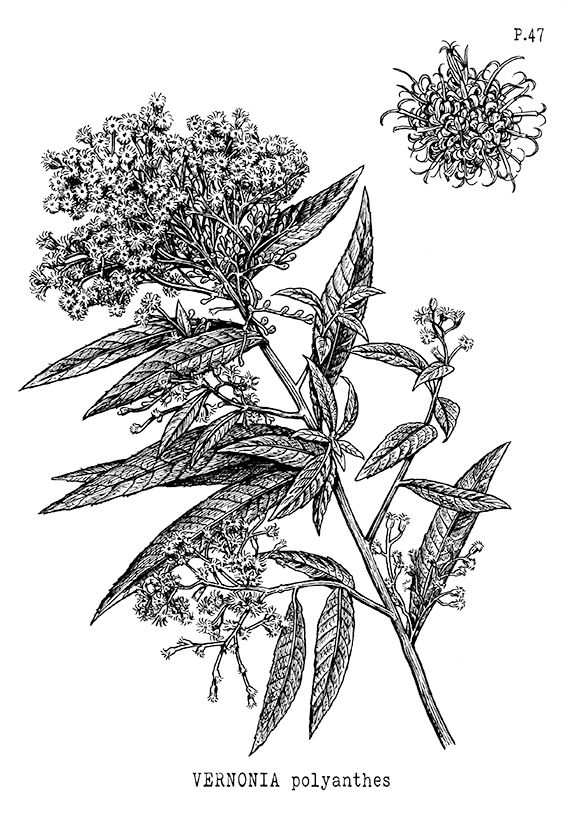
47 - ASSA PEIXE BRANCO Vernonia polyanthes Less. (ASTERACEAE)

47- Assa-peixe branco - Vernonia polyanthes Less. (ASTERACEAE)
Shrub or grove, erect, little branched, rhizomatous, with stems covered with grayish feathers, up to 3 m high. Leaves simple, rough on the top and hairy on the bottom, pointed, long, serrated margin, 10 to 24 cm x 3 cm. The flowers are gathered in small chapters, arranged in panicles at the tips of the branches, in white color and without great ornamental value.
Distribution: Midwest, Southeast and South. It is easy to multiply and occurs in forest borders, as well as in cerrado.
Situation in São Paulo: It has an invasive behavior and is easily found in vacant lots, parks and roadsides.
How to plant:
Uses: In addition to being used in folk medicine for respiratory problems, it is anti-inflammatory, antimicrobial and healing. It is considered edible - try its young and tender leaves breaded and breaded fried, its crunchiness reminiscent of the texture of a fried fish, like a lambari or manjubinha. It can be used in regeneration projects, acting as a pioneer and being highly sought after by bees.
KINUPP, VF; LORENZI, H. NON-CONVENTIONAL FOOD PLANTS (PANC) IN BRAZIL: IDENTIFICATION GUIDE, NUTRITIONAL ASPECTS AND ILLUSTRATED REVENUE. 2014.
TEMPONI, V. S ET AL. CHEMICAL RESEARCH AND PHARMACOLOGICAL ACTIVITIES OF VERNONIA POLYANTHES LESS. MASTERS DISSERTATION. JUIZ DE FORA FEDERAL UNIVERSITY. 2012.

Capins-rabo-de-burro, no Cerrado Infinito da Nascente.

Primeiros capins rabos de burro plantados por seres humanos em São Paulo!!! Culturalmente este capim é uma praga e sempre foi eliminado. Todos pensam assim, jardineiros, paisagistas, hortelãos, pecuaristas, etc. Não deixa de ser irônico conseguir convencer pessoas a pegar na enxada para plantá-los. Tem coisas que entendemos melhor usando as mãos, a atividade manual é uma extensão mental, importante de várias formas. Muita gente tem constrangimento em usar uma enxada, como se fosse uma questão

Foi uma das primeiras espécies que introduzimos, logo no começo do projeto. Depois de algumas semanas, já adaptadas, alguém botou fogo nos capins, uma recado de que não seria fácil mudar a cultura sobre eles.

Com as chuvas os capins se recuperaram rápido, logo produziram sementes e começaram a nascer por todo lado.

No começo os jardineiros da prefeitura eram uma ameaça, já existia um histórico de conflitos com outras iniciativas de plantar na praça. Eles cortavam tudo entre 5 cm e a copa das árvores, mas logo entenderam do que se tratava. Muitos tinham vindo de áreas rurais, da Bahia, do Nordeste e conheciam as plantas. Talvez a saudade da paisagem de origem tenha ajudado eles a entenderem a proposta, Passaram a preservar as plantas do Cerrado Infinito.

O capim rabo-de-burro é uma espécie que gosta de água, e recorrente na beira de lagoas, e várzea dos rios.

Coletando sementes de capim Rabo de Burro, não tem segredo, terrinha, sol, e uma boa irrigação, e BUM! Você terá centenas de mudas!